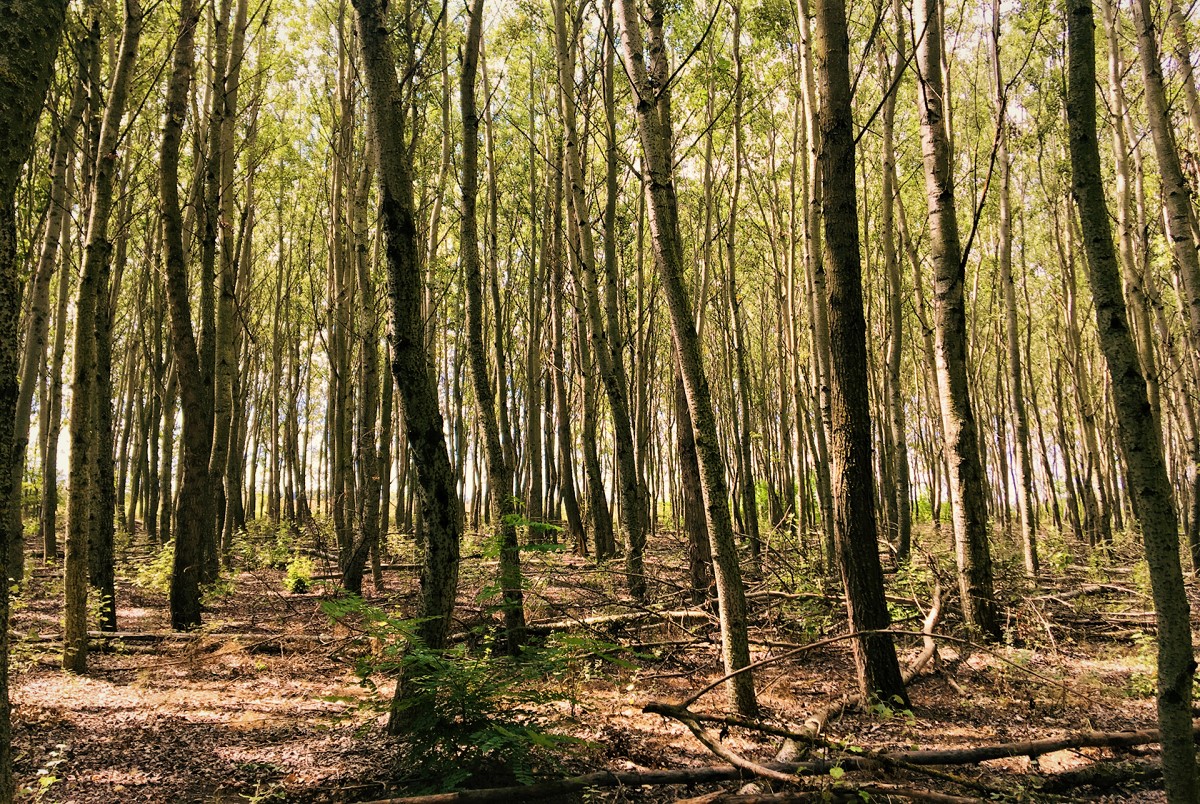
Over the past two centuries, in Hungary and globally, the area of natural and semi-natural forests shrunk dramatically, while at the same time some of the economic functions of forests have been taken over by tree plantations, which cover a significant area (3.8% of Europe’s forests but in Hungary in some region e.g. Kiskunság this proportion exceeds 80%). Plantations are intensively managed forests, mainly composed of one or two tree species, which mainly perform economic functions (e.g. timber and firewood production). There is a long-standing controversy about the evaluation of tree plantations, depending on whether the economic or the nature conservation values of the forest are regarded as a primary role. While tree plantations can also provide some important ecosystem services alongside the economic benefits of timber production, in these ‘forests’ taxonomic diversity decreases radically or the plantations become a hot spot for biological invasions.
A paper of the researchers of the University of Szeged and the Centre for Ecological Research, published in Forest Ecology and Management, represents a significant step forward in the more accurate ecological assessment and evaluation of Hungarian tree plantations. The sample area was the Kiskunság Sand Ridge, a lowland region in the center of the Pannonian biogeographic region between the rivers Danube and Tisza in Hungary, where semi-natural forests survived almost exclusively in the forest-steppe mosaics of protected areas, but tree plantations are widespread in the landscape. The analysis compared four types of forest habitat: near-natural poplar forest Junipero-Populetum albae and three types of tree plantation: native deciduous white poplar (Populus alba), the non-native deciduous black locust (Robinia pseudoacacia), and the non-native evergreen Austrian pine (Pinus nigra) plantation. The study assessed the diversity of the vegetation, not only in terms of species diversity, but also in terms of functional and phylogenetic diversity indicators, i.e., how diverse the vegetation is in each type in terms of plant traits (pollination type, seed dispersal, life form, flowering date, etc) and phylogenetic lineages. Each type of habitat was assessed from an ecological and conservation point of view based on the occurrence of protected, endemic and red-listed species, i.e. the rarest and most valuable species from a conservation point of view.
László Erdős, a research fellow at the Centre for Ecological Research and one of the lead authors of the paper, says that each forest type has a unique species composition, but semi-natural forests are the richest in native species, while tree plantations are dominated by weeds and non-native species. The semi-natural forest is also characterized by the frequent occurrence of native shrub species such as Berberis vulgaris, Ligustrum vulgare, and Rhamnus catharticus. In the case of tree plantations, shrubs disappear as a result of the forestry activities (mechanical site preparation and mechanical weed control) to protect the saplings. The planted tree species also have an impact on the forest floor, e.g. in Robinia pseudoacacia stands weed species that tolerate high nitrogen levels appear, or in pine forests, the deep layer of slowly decaying leaf litter results in a special species composition.
The analysis also showed that low taxonomic diversity in tree plantations does not necessarily imply low functional or phylogenetic diversity, as several different diversity indicators provide a more complex characterization of the plant diversity of a habitat. Among the tree plantations, native poplar plantation and pine forest were found to be more favorable habitats for plant diversity than black locust stands. Black locust was also the most degraded of the habitats studied in terms of naturalness indicators.
The study provides a more accurate assessment of the different types of tree plantations in the region and has important implications for forest management and conservation. From an ecological and conservation point of view, the remnants of semi-natural forest are much more valuable than any of the tree plantations, and therefore conservation and restoration programs should focus primarily on these areas. Of the tree plantations, the planting of native white poplar (Populus alba) should be preferred when further tree plantations are to be established. In the longer term, reducing the area of black locust and pine plantations is inevitable, and the establishment of a mosaic of grassland and forest, in keeping with the semi-arid climate of the Kiskunság, is appropriate for the forest-steppe region.
Publication:
Khanh Vu Ho, György Kröel-Dulay, Csaba Tölgyesi, Zoltán Bátori, Eszter Tanács, Miklós Kertész, Péter Török, László Erdős: Non-native tree plantations are weak substitutes for near-natural forests regarding plant diversity and ecological value Forest Ecology and Management, Volume 531. 2023.
https://doi.org/10.1016/j.foreco.2023.120789.


